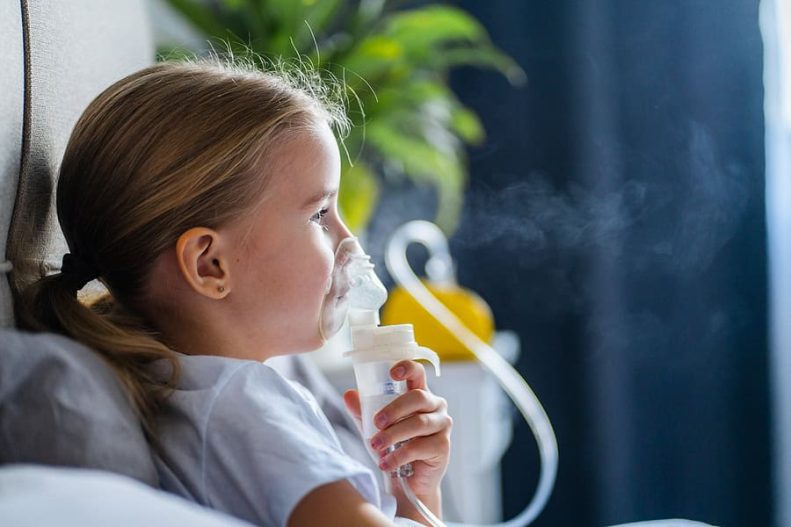
Table of Contents
ToggleYour home is where you likely feel most comfortable. But if you or a loved one has asthma, allergens in the air can make your days utterly miserable. Many air purifiers promise to reduce indoor asthma triggers and improve your quality of life, but depending on the type of purifier you use, it might not be as effective as claimed and may even aggravate your asthma symptoms.
With that in mind, let’s explore the best air purifier for asthma, how it works, and tips to optimize it for maximum asthma relief.
Asthma is a chronic, incurable lung disease that inflames the airways, the tubes that carry air in and out of your lungs, the American Lung Association explains. Normally, air flows freely to and from the lungs, but when you have asthma, the lining of your airways becomes inflamed, swollen, and sometimes filled with excess mucus.
During an allergic asthma attack, the swelling and mucus production increase, and the muscles around the airways tighten, causing the air passages to become narrowed. With less air entering and leaving the lungs, breathing becomes more difficult or uncomfortable.
According to the Asthma and Allergy Foundation of America (AAFA), common symptoms of asthma include:
Remember, though, that asthma doesn’t affect everyone the same way. It can be a mere nuisance for some people and disrupt daily activities, spark severe asthma attacks, and even reduce lung function and cause breathing difficulties in others if not treated early and adequately. Not only that, but asthma is chronic, meaning it never truly goes away, even if your symptoms do.
Though you can’t see them without a microscope, many tiny particles in your indoor air can set off a series of asthma symptoms when inhaled. Here are some of the most common allergic triggers for asthma to keep on your radar:
Learn why PM2.5 is the most dangerous thing you’re breathing and how mold can make your home and clothes smell musty.
Since there is no cure for asthma, the goal is to manage the symptoms at home as best as possible. Asthma medications are absolutely vital, and you should always take them as prescribed. However, a suitable air purifier can be a valuable addition to your asthma treatment and action plan.
Some air purifiers can reduce airborne asthma triggers like dust, mold, smoke, and odors. Unfortunately, many purifiers aren’t beneficial for asthma, and may do more harm than good for those with the condition. That’s why using the right air purifier is crucial if you or a family member has asthma.
There are dozens of air purifiers on the market. However, medical professionals agree that a High Efficiency Particulate Air (HEPA) air purifier is the gold standard for asthma relief. HEPA filters are verified to trap up to 99.97% of particles as small as 0.3 microns, including common asthma triggers like dust mites, pet dander, mold spores, and pollen.
For more robust air protection, consider purifiers like TrustedAir’s Smart Air Purifier, which combines True HEPA with activated carbon filtration. The activated carbon filter helps eliminate odors, harmful gases, and VOCs (volatile organic compounds), while the HEPA filter captures ultra fine particles that could trigger an asthma flare up. A quiet air purifier for sleep is the route to go for anyone wanting sound sleep.
Important: You may also see ionizers and ozone generating air purifiers marketed as solutions for asthma DO NOT purchase them. These purifiers are relatively ineffective at removing larger asthma triggers like pollen or household dust, and may produce ozone that can trigger asthma attacks or cause asthma to develop.
Discover how air purifiers help reduce allergies and which one to buy.
Now that you know what the best air purifier for asthma is (and the ones to avoid), let’s look at some steps you can take to yield the best air cleaning results from your purifier:
Dealing with asthma is never fun, especially when symptoms like labored breathing and chest tightness arise. While you can’t prevent asthma, adding an air purifier with HEPA and activated carbon filtration to your asthma treatment plan can help you better manage the symptoms at home. That way, you can breathe easier, get more quality sleep, and enjoy a higher quality of life.
If you have a question about our TruFlow Smart Air Purifier or have a concern not addressed in this article, contact TrustedAir today, and our expert team will assist you. While you’re here, visit our Air Quality Blog for the latest insights, actionable tips, and science backed strategies to purify your air, protect your health, and enjoy every breath with confidence.
An air purifier is better for asthma because it removes potential triggers like dust, pollen, mold, and pet dander. A humidifier adds moisture to the air, which can worsen asthma symptoms if the humidifier runs too often or too high.
Absolutely. An air purifier’s Clean Air Delivery Rate (CADR) tells how quickly and efficiently the unit cleans the air. Ideally, the purifier’s CADR should be at least two-thirds of your room’s area.
No, an air purifier is not a cure for asthma. However, the right purifier can help control asthma symptoms, especially when used alongside medication and other asthma management strategies.
Besides using an air purifier for asthma, make sure to vacuum and dust your home frequently, use dust mite proof bedding, avoid smoking indoors, groom pets outside the house, and control indoor humidity levels to help prevent mold.